
中国牙科研究杂志(英文)(Chinese Journal of Dental Research,CJDR) 知网目次
- 国级普刊
- 主管单位:
中国科学技术协会
- 主办单位:
中华口腔医学会、科学普及出版社
- 国际刊号:
1462-6446;EISSN 1867-5646
- 国内刊号:
10-1194/R
- 学科分类:
- 字数:
-
- 有无基金:
- 周期:
CN外文-季刊
- 特殊属性:
外文期刊,第二批认定学术期刊
- 电话:
010-82195785(202401期)
- 邮箱:
editor@cjdrcsa.com(202401期)
- 复合因子:
0
- 综合因子:
0
- 收录:
知网目次
- 级别:
国级普刊
期刊简介
《中国牙科研究杂志》期刊已被查看: 次
更新频次
单位占比
一作占比
投稿指南
1、投稿方式:在线投稿。
2、刊内网址:(202401期)
http://www.cjdrcsa.com/
http://www.quint.link/cjdr/
http://mc03.manuscriptcentral.com/cjdr(投稿系统)
3、刊内邮箱:editor@cjdrcsa.com
4、刊内电话:010-82195785
5、出刊日期:季刊,逢季末月出版。
2024年5月28日星期二
《中国牙科研究杂志(英文)》2024年约稿通知
【微信公众号信息】
中华口腔医学会 2023-12-06 16:01 北京
Chinese Journal of Dental Research
2024年约稿通知
Chinese Journal of Dental Research (Chin J Dent Res,CN10-1194/R)是由中国科学技术协会主管、中华口腔医学会主办、北京大学口腔医院和德国Quintessence出版集团协办的英文学术期刊。内容涵盖口腔医学各个专业领域,主要栏目有原创论著、综述、专家共识、CSA指南、病例报告等。
CJDR作为中华口腔医学会英文会刊,创刊之时即为国际化刊物,按照国际专业标准办刊,拥有国际化的编委会和国内各大口腔医学院校的支持,现任主编为郭传瑸教授。经严格审查和评阅,2010年被MEDLINE收录,2017年被ESCI收录,2019年被Scopus收录,2023年首个影响因子0.9。
欢迎广大口腔医学同仁们投稿、关注、引用!
投稿地址:http://mc03.manuscriptcentral.com/cjdr
期刊官网:www.quint.link/cjdr或http://www.cjdrcsa.com
联系电话:010-8219 5785
电子邮箱:editor@cjdrcsa.com
中华口腔医学会
Chinese Journal of Dental Research
编辑部
《中国牙科研究杂志(英文)》投稿须知
【2024年01期信息】
Guideline for authors
Chinese Journal of Dental Research is a peer-reviewed general dental journal published in English by the Chinese Stomatological Association. The journal publishes original articles, invited review, CSA guidelines, experts consensus and case report manuscripts. Manuscripts are welcome from any part of the world. The journal is currently published quarterly and distributed internationally by Quintessence Publishing Co Ltd.
All authors are asked to adhere to the following guidelines.
Manuscript submission
SchollarOne Manuscripts for the Chinese journal of Dental Research (CJDR) has been launched.
To submit your outstanding research results more quickly, please visit: http://mc03.manuscriptcentral.com/cjdr
Any question, please contact:
4F, Tower C, Ja 18#, Zhongguancun South Avenue, HaiDian District, 100081, Beijing, P.R. China.
E-mail: editor@cjdrcsa.com
Tel: 86-10-82195787; Fax: 86-10-62173402
Submitted manuscript must be unpublished original paper that is not being considered for publication elsewhere. Submissions that have been published with essentially the same content will not be considered. This restriction does not apply to results published as an abstract. The submission of the manuscript by the authors means that the authors automatically agree to assign exclusive license to the copyright to Chinses Stomatologycal Association if and when the manuscript is accepted for publication.
Manuscripts must be accompanied by a letter from all authors or from one author on behalf of all the authors containing the statement that the manuscript has been read and approved by all the authors and the criteria for authorship have been met. It should also contain the following statement: “The attached (enclosed) paper entitled ... has not been published and is not being submitted for publication, in whole or in part, elsewhere.”
Manuscripts that reveal a lack of proper, ethical consideration for human subjects or experimental animals will not be accepted for publication. The Journal endorses the Recommendations from the Declaration of Helsinki.
Format of Papers
Preparation of manuscripts
The manuscript should be written clearly and concisely and be double-spaced on 21 × 29 cm white paper with at least 2.5 cm margin all around. All pages should be numbered, beginning from section of title page, and followed by abstract, introduction, materials and methods, results, discussion, acknowledgements, references, figure legends and figures/tables. Non-standard abbreviations should be defined when first used in the text. Use a standard font such as Times New Roman or Arial to avoid misrepresentation of your data on different computers that do not have the unusual or foreign language fonts. For units, the Journal recommends the use of the International System of Units (SI Units). For authors whose native language is not English, the Journal strongly recommends brushing up the English of the manuscript by consulting an English speaking scientist before submission.
Title page--should include: Full title (a brief declarative statement of the major findings of the research), full names of authors, professional affiliations and complete postal address, telephone and Fax number, and E-mail address of the corresponding author. If the work was supported by a grant, indicate the name of the supporting organization and the grant number.
Abstract and keywords: 250 words presented in a concise
form and including the objective, methods, results, and conclusions of the research described in the paper. A list of 5 keywords or short phrases (a few words per phrase) suitable for indexing should be typed at the bottom of the abstract page. Avoid vague or overly general terms. If necessary, the keywords will be adjusted to the standards of the Journal by the editors without consulting the authors.
Introduction: should begin with a brief introduction of background related to the research and should be as concise as possible. The rationale of the study should be stated.
Materials and Methods: should be described clearly and referenced in sufficient detail. Description should be such that the reader can judge the accuracy, reproducibility, reliability, etc. of the work.
Results: should present the experimental data in tables and figures with suitable descriptions and avoid extended discussions of its relative significance.
Discussion: should focus on the interpretation and significance of the findings with concise objective comments. Speculation is to be based on data only. The text should be written with a logical connection between the introduction and conclusions.
Acknowledgments: should only recognize individuals who provided assistance to the project.
Author contribution: should present briefly the contribution from each author in the research.
References--should be cited in the text and typed in numerical order following a style below for examples:
1. Sorensen JA, Engleman MT, Torres TJ, Avera SP. Shear bond strength of composite resin to porcelain. Int J Prosthodont 1991;4:17-23.
2. Renner RP, Boucher LJ. Removable Particle Dentures. Chicago: Quintessence, 1987:24-30.
3. White GE, Johson A van Noort R, Northeast SE, Winstanley B. The quality of cast metal ceramic crowns made for the NHS [abstract 48], J.Dent Res 1990;69 (special issue):960.
4. Jones DW. The strength and strengthening mechanisms of dental ceramics. In: McLean JW (ed). Dental ceramics:
Proceedings of the First International Symposium on Ceramics. Chicago: Quintessence, 1983:83-41.
5. Rosenstiel, S. The Marginal Reproduction of Two Elastomeric Impression Materials [Master’s thesis]. Indianapolis: Indiana University, 1997.
Figures and Tables--should be numbered consecutively with Arabic numerals, with each one displayed on a separate page. Photographs should be of excellent quality with resolution of 300 dpi at least in a width of 8 cm. All photographs should be cited in the text. Please refer to a current volume of this Journal for general patterns.
Legends Legends for all figures, including charts and graphs, must be typed together on a separate page and should be understandable without reference to the text, including a title highlighting the key results and a key for any symbols or abbreviations used in the figure.
Case report
Authors should describe one to three patients or a single family. The text is limited to no more than 2500 words, and up to 15 references.
Revised Manuscripts
All revisions must be accompanied by a cover letter to the Editor. The letter must detail on a point-by-point basis the contributors' disposition of each of the referees' comments, and certify that all contributors approve of the revised content.
《中国牙科研究杂志》同类五官科学期刊
-
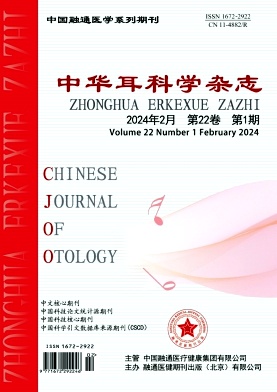
中华耳科学杂志(不收版面费审稿费)
北核,CSCD,科核,高T2,武B+
CN中文-双月刊影响因子1.422
-
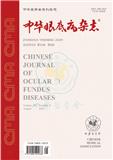
中华眼底病杂志
北核,科核,CSCD扩,高T3,武B+,CACJ-扩展
CN中文-月刊影响因子0.751
-
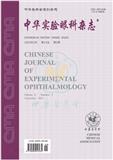
中华实验眼科杂志(原:眼科研究)
北核,CSCD,科核,武A-,高T3
CN中文-月刊影响因子1.072
-
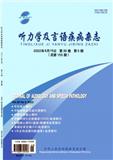
听力学及言语疾病杂志
北核,CSCD,科核,高T3,武B+
CN中文-双月刊影响因子1.056
-
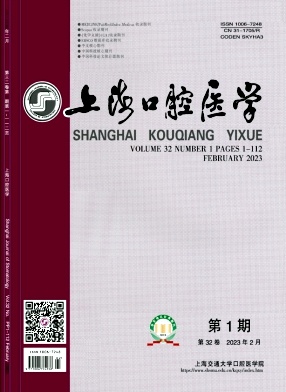
上海口腔医学
科核,武A-
CN中文-双月刊影响因子0.887
-
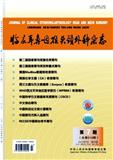
临床耳鼻咽喉头颈外科杂志(原:临床耳鼻咽喉科杂志)
北核,CSCD,科核,武A-,高T2
CN中文-月刊影响因子1.33
-
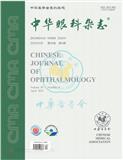
中华眼科杂志
北核,CSCD,科核,高T1,武B+
CN中文-月刊影响因子1.532
-
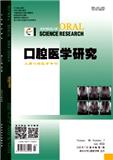
口腔医学研究
北核,科核,CSCD扩,武A-
CN中文-月刊影响因子0.998
常见问题
-
中国牙科研究杂志杂志社官网、联系方式是什么?
中国牙科研究杂志杂志社官网:http://www.cjdrcsa.com/
投稿网址:http://mc03.manuscriptcentral.com/cjdr联系电话:010-82195785(202401期)
投稿邮箱:editor@cjdrcsa.com(202401期) -
中国牙科研究杂志杂志是核心期刊么?
中国牙科研究杂志不是核心期刊,级别是:国级普刊, 是:五官科学分类下的知网目次收录的期刊。
-
请问你们是中国牙科研究杂志杂志社吗?
我们不是《中国牙科研究杂志》杂志社。本站主要从事期刊信息展示与期刊推荐,不是任何杂志官网,直投稿件请联系杂志社。本站仅提供免费的学术指导、论文辅导、期刊投稿信息整理收集服务。
-
你们指导服务后可以保证文章被发表吗?
期刊发表的成功与否,主要取决于文章内容的质量。编辑老师会根据研究领域、创新性等多因素进行考量。我们会帮助您理解期刊的发表要求,助力提升发表几率,从而增加发表的机会。
-
晋级论文能否在报纸上发表?
在学术界,论文的发表往往被视为研究者职业发展的重要一环。晋级论文,即为了获得更高职称或学术地位而撰写的学术论文,通常需在专业期刊上发表。然而,许多人可能会问
